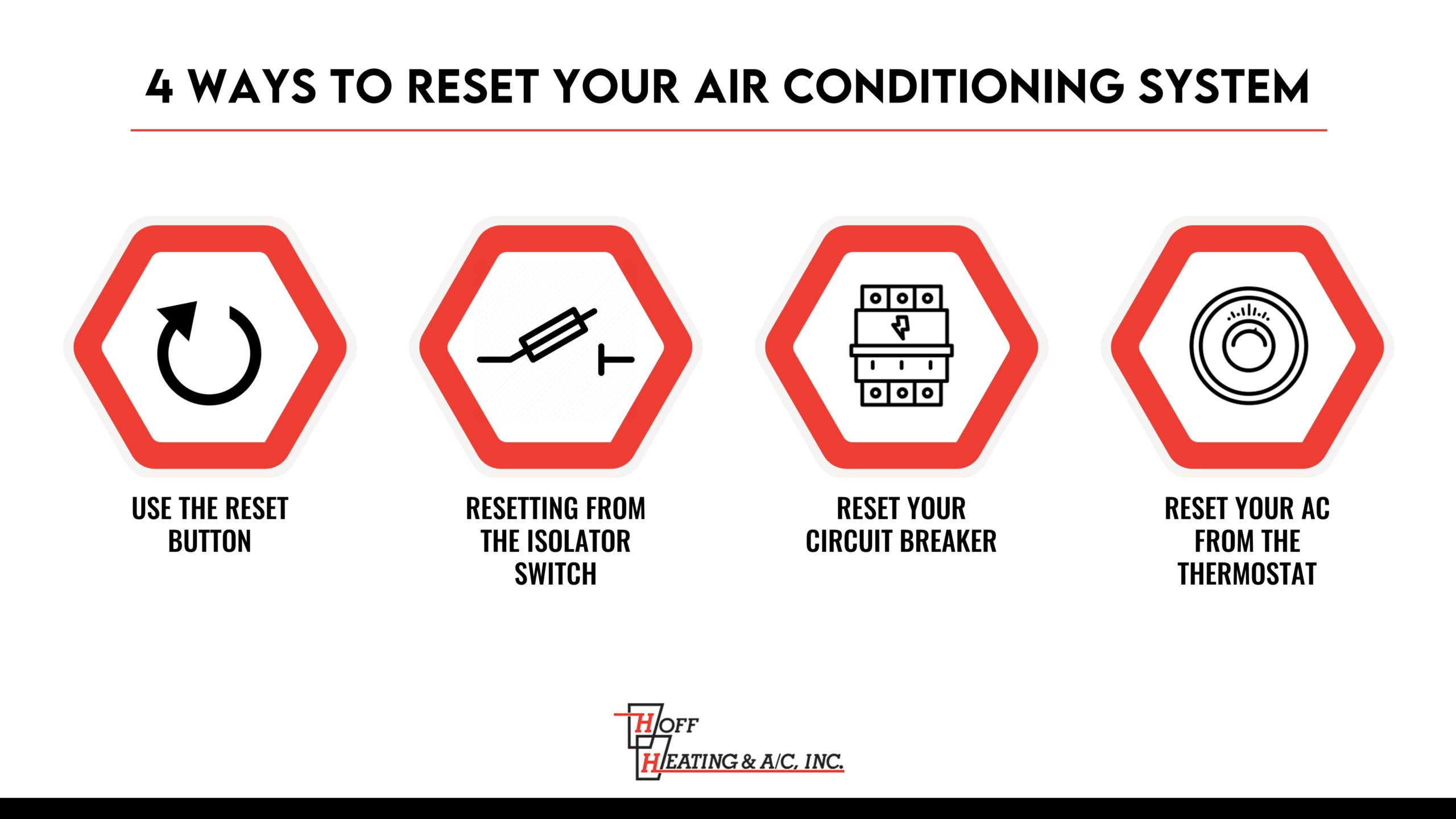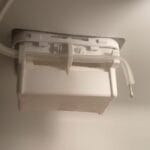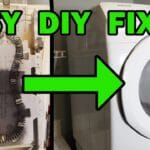Imagine you’ve just started your latest DIY project or you’re in the middle of an important task, and suddenly your air compressor trips the reset button. Frustrating, right?
You’re not alone in this dilemma. Many people face this issue, and it can be a real headache, interrupting your workflow and causing unnecessary delays. But what if there was a way to understand why this keeps happening and how you can fix it once and for all?
You deserve the smoothest operation from your tools, and knowing the reasons behind a tripping air compressor can make all the difference. This article will guide you through the possible causes and solutions, empowering you to tackle the problem head-on. Keep reading, and you’ll discover how simple adjustments can prevent this issue and get you back to your projects without a hitch. Don’t let a persistent reset button stand in your way—learn how to take control today.
Common Causes
Air compressors are essential tools in many industries and homes. But they can sometimes trip the reset button. Understanding the common causes helps troubleshoot the problem effectively. Knowing what triggers these issues can save time and resources. This section explores the typical reasons an air compressor might trip.
Electrical Overload
An electrical overload can trip your compressor’s reset button. This happens when too much power runs through the system. Overload can damage the compressor’s electrical components. Check if the compressor is on a dedicated circuit. Avoid using extension cords. Proper wiring ensures safe operation. Regular maintenance can prevent overloads.
Clogged Air Filters
Clogged air filters can cause the compressor to trip. Dirt and debris block airflow and force the motor to work harder. This extra strain can lead to overheating. Regularly cleaning or replacing filters prevents clogs. Clean filters improve performance. They also prolong the compressor’s life.
Faulty Pressure Switch
A faulty pressure switch can lead to frequent resets. The pressure switch controls the compressor’s start and stop cycles. If it malfunctions, the compressor may not regulate pressure properly. This can cause it to trip. Inspect the pressure switch for wear and tear. Replace it if necessary. A functional switch ensures smooth operation.
Malfunctioning Motor
The motor is crucial to the compressor’s operation. A malfunctioning motor can trip the reset button. Motors can overheat due to wear or electrical issues. Listen for unusual sounds from the motor. Regular inspections can catch problems early. Fixing motor issues prevents further damage. Keeping the motor in good shape ensures efficiency.
Initial Inspection
An air compressor that constantly trips the reset can be frustrating, leaving you wondering what’s causing the issue. Before diving into complex solutions, an initial inspection can often reveal the root of the problem. This step-by-step guide will help you understand what to look for and ensure your air compressor runs smoothly.
Check Power Supply
Start by examining the power supply. Is the plug secure in the socket? A loose connection might be interrupting power flow, causing the reset to trip. Check the circuit breaker as well—sometimes it trips without a clear reason. A simple reset of the breaker might solve your issue. Also, consider whether other appliances are competing for power. Overloading the circuit can trip the reset, so ensure your compressor has dedicated access to electricity.
Inspect Air Filters
Air filters play a critical role in the efficient operation of your compressor. Dirty or clogged filters can restrict airflow, overworking the motor and causing it to trip the reset. Remove the filter and hold it up to the light. If light struggles to pass through, it’s time for a cleaning or replacement. Regular maintenance of air filters can prevent tripping issues and enhance performance. Think about when you last cleaned or changed the filters—was it too long ago?
Examine Pressure Switch
The pressure switch controls the activation of the compressor motor, ensuring it runs within safe pressure limits. A malfunctioning switch can mistakenly signal the motor to stop, leading to a reset trip. Listen for unusual sounds when the compressor runs; they might indicate a faulty switch. If the pressure settings seem off, adjusting or replacing the switch might be necessary. Have you noticed any erratic behavior in your compressor’s pressure readings recently?
By focusing on these areas during your initial inspection, you can often pinpoint the issue causing your air compressor to trip the reset. Whether it’s a power supply glitch, a clogged air filter, or a faulty pressure switch, addressing these elements can save you time and frustration. Remember, a proactive approach can keep your air compressor in top shape, enhancing its longevity and reliability.
Diagnosing Electrical Issues
Diagnosing electrical issues with your air compressor can be a bit challenging, but understanding the potential problems can save you both time and money. When your air compressor keeps tripping the reset, it’s a sign that something isn’t quite right with its electrical components. Tackling this head-on can make a big difference in your compressor’s performance and longevity. Let’s explore how to test circuit breakers, inspect wiring, and assess motor capacitors to get your compressor back on track.
Test Circuit Breaker
Begin by checking if the circuit breaker is functioning properly. A tripped circuit breaker might be the culprit behind your compressor’s frequent resets. Ensure the breaker is fully in the “on” position. If it trips again, it might be overloaded or faulty.
Consider reducing the load on the circuit or replacing the breaker if it’s worn out. You wouldn’t want your air compressor to work harder than it has to, right? A simple test can prevent future headaches.
Inspect Wiring And Connections
Next, inspect the wiring and connections. Loose or damaged wires can cause electrical mishaps. Ensure all wires are tightly connected and free from damage or corrosion.
Have you ever noticed frayed wires in your gadgets at home? That same kind of wear can occur in your compressor, leading to resets. Regular checks can prevent this issue.
Assess Motor Capacitor
The motor capacitor is a critical component that helps start and run the compressor. If faulty, it can cause the compressor to trip the reset. Look for any signs of swelling or leakage.
A malfunctioning capacitor can be replaced easily. Picture it as a simple fix that can breathe new life into your air compressor. Why wait for a bigger problem when a small change can solve it?
Diagnosing these electrical issues might seem daunting, but breaking it down step-by-step can simplify the process. What will you tackle first to ensure your compressor runs smoothly?

Credit: www.youtube.com
Addressing Mechanical Problems
Addressing mechanical problems in your air compressor is essential. It helps maintain its efficiency and longevity. Mechanical issues can cause the compressor to trip the reset button. Simple maintenance tasks often solve these problems. Regular attention can prevent unexpected breakdowns. Let’s explore some key areas to focus on.
Clean Or Replace Air Filters
Dirty air filters restrict airflow. This can cause the compressor to overheat. Check the filters regularly. Clean them if they are reusable. Replace them if they are too dirty. Clean filters ensure smooth operation. They also prolong the life of the compressor.
Lubricate Moving Parts
Proper lubrication reduces friction. It prevents wear and tear in moving parts. Check the user manual for the right type of lubricant. Apply it to the moving parts periodically. Well-lubricated parts run smoothly. This reduces the risk of mechanical failures.
Check For Air Leaks
Air leaks cause the compressor to work harder. This increases energy consumption. Inspect the hoses and connections for leaks. Listen for hissing sounds. Use soapy water to identify leaks. Tighten or replace parts as necessary. Fixing leaks improves efficiency.
Pressure Switch Adjustments
Pressure switch adjustments are often the unsung heroes in resolving issues with air compressors that keep tripping reset. This small component plays a vital role in regulating the compressor’s operation by managing the pressure levels. Understanding how to calibrate, replace, and safely adjust these switches can significantly improve your compressor’s performance and prevent frustrating downtime.
Calibrate Pressure Settings
Calibrating the pressure settings is the first step in addressing a tripping reset issue. Have you checked the pressure settings recently? Incorrect settings might be the culprit. Most air compressors have a manual or digital gauge that lets you adjust the pressure levels. Ensure the settings match the recommended levels indicated in the compressor manual.
Start by turning off the power to avoid any mishaps. Use a screwdriver to fine-tune the pressure switch settings, ensuring they are not too high or too low. Small changes can make a big difference. Test the compressor after adjustments to see if it runs smoothly without interruptions.
Replace Faulty Switch
Sometimes, a faulty pressure switch could be causing the reset issue. If calibrating the settings doesn’t solve the problem, consider replacing the switch. It’s easier than you might think and can save you a lot of hassle. You can purchase a replacement switch from your local hardware store or online.
Replacing it is straightforward: turn off the power, disconnect the old switch, and connect the new one following the manufacturer’s instructions. It’s like swapping a light bulb, but ensure all connections are secure. This simple replacement can breathe new life into your compressor.
Safety Considerations
Safety should always be your top priority when dealing with electrical components. Have you ever had a close call while working on equipment? To avoid accidents, make sure the compressor is unplugged before making any adjustments. Wear safety goggles and gloves to protect yourself from potential hazards.
Consider using insulated tools to prevent electrical shock. While pressure switches are generally safe to handle, caution is essential. If you’re unsure about any step, consult a professional. Better safe than sorry, right?
By mastering pressure switch adjustments, you can tackle the tripping reset issue head-on and improve your air compressor’s reliability. What adjustments have you tried with your compressor? Share your experiences and tips below!
Maintenance Best Practices
Maintaining an air compressor is crucial for avoiding frequent resets. Proper upkeep ensures smooth operation and prolongs the machine’s life. Follow these simple practices to keep your air compressor running efficiently.
Regular Cleaning Schedule
Dust and debris can clog air vents and filters. This buildup strains the compressor, leading to frequent resets. Clean the air compressor regularly to prevent blockages. Use a brush or compressed air to clear dust from vents. Ensure filters are free of dirt and replace them if needed.
Periodic Component Check
Inspect the compressor’s components to catch issues early. Check hoses for cracks or leaks. Examine electrical connections for wear or damage. A quick check can reveal problems before they cause a reset. Tighten loose parts to maintain optimal performance.
Professional Servicing
Schedule professional servicing to ensure thorough maintenance. Experts can identify hidden problems that you might miss. They have tools and knowledge for a deep inspection. Regular professional check-ups help in preventing unexpected breakdowns.
When To Seek Professional Help
Experiencing frequent resets with your air compressor signals possible electrical or mechanical issues. Troubleshooting fails? Time for professional help. Ensure safety and avoid damage by consulting an expert.
When your air compressor keeps tripping the reset button, it may signal deeper issues. While some problems can be fixed at home, others need expert intervention. Understanding when to call a professional can save time and prevent damage.Persistent Tripping Issues
If the compressor trips often, it’s a red flag. Frequent resets indicate an underlying problem. Maybe the motor is overheating or there’s a pressure imbalance. These issues might need specialized tools or knowledge. A technician can diagnose and fix these problems effectively. Ignoring persistent tripping can worsen the situation.Complex Electrical Failures
Electrical problems are tricky and can be dangerous. Complex failures, like faulty wiring or circuit issues, require professional help. Tampering with electrical components without expertise can lead to accidents. A professional ensures all connections are safe and secure. They can identify and rectify electrical faults swiftly.Warranty Considerations
If your air compressor is under warranty, seeking professional help is vital. Unauthorized repairs can void the warranty. Check warranty terms before attempting fixes. Professionals have the skills and authorization for repairs. They ensure compliance with warranty conditions, protecting your investment.
Credit: www.amazon.com

Credit: hoffheating.com
Frequently Asked Questions
Why Does My Air Compressor Keep Tripping Reset?
Your air compressor might trip reset due to electrical issues or overheating. Check for blocked airflow and clean vents.
How Can I Fix A Tripping Air Compressor?
First, inspect the power source and connections. Then, clean the air filter and check for overheating components.
Is A Faulty Motor Causing Reset Tripping?
Yes, a worn-out motor can cause tripping. Inspect the motor for any signs of damage or wear.
Can Low Voltage Affect Air Compressor Reset?
Low voltage can cause the compressor to trip. Ensure your power supply meets the required voltage specifications.
What Are Common Signs Of Air Compressor Malfunction?
Common signs include frequent tripping, unusual noises, and inconsistent pressure. Regular maintenance can prevent these issues.
Conclusion
Troubles with air compressors can be frustrating. Resetting issues often have simple solutions. Regular maintenance helps keep your compressor running smoothly. Check connections and clean filters often. Listen for unusual noises or leaks. These signs may point to bigger problems.
Quick fixes can sometimes solve minor issues. Seek professional help if problems persist. Experts can diagnose and repair with ease. Keeping your compressor in good shape ensures safety and efficiency. Enjoy uninterrupted use with proper care. Your equipment will thank you.
Stay proactive in solving reset troubles. Your air compressor’s longevity depends on it.




